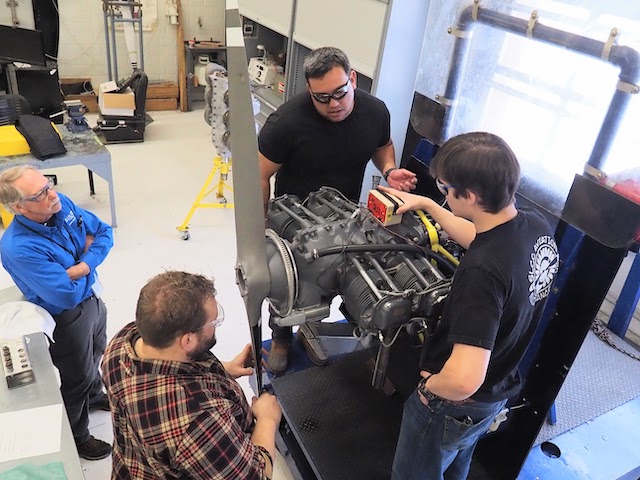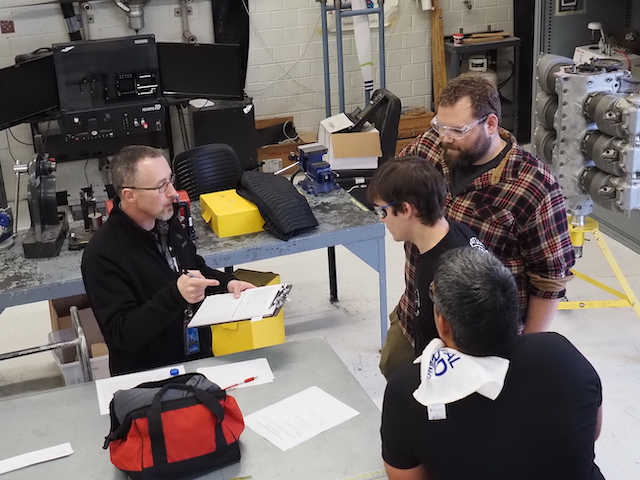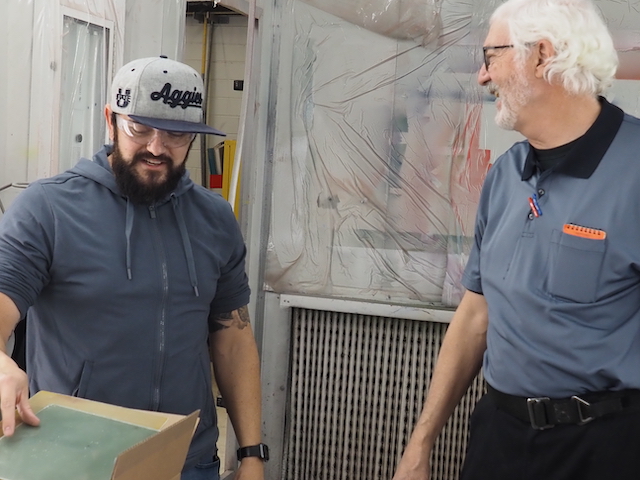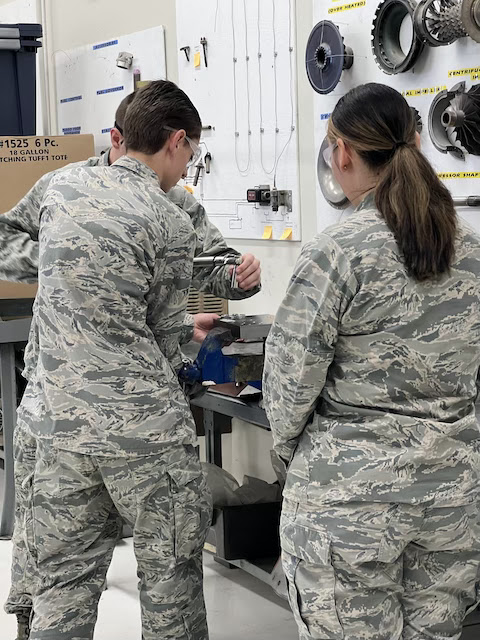 |
| A team of students working on a propeller while the judge watches them |
Event information
Salt Lake Community College hosted its third annual Intermountain West Airframe and Power Plant Competition. The event accommodated 120 aviation maintenance students from Utah and other Intermountain states for the opportunity to showcase their knowledge, skills and expertise amongst their peers and judges. The jam-pack competition day consisted of 14 events and the 26 teams consisting of three participants each, were tested on their aviation maintenance skills. The evaluated areas comprise but are not limited to aircraft fuel tank sealing, component replacement and composite testing.
 |
| Participants waiting to compete on their events |
Competition time
Students were allotted 15 minutes to complete the task at hand during each event, whether filling out logbooks and forms or finding structural damage to an aircraft. The judges welcomed every group, and they were given directions and words of encouragement and wished the best of luck. They were reminded that though they were the judges, they could also help answer questions and were there to ensure students succeeded in their event.
 |
| Judge given directions to students |
“The more you get familiar with the aircraft, the more second nature and easier the work becomes,” Bryan Gibbs, from Alpine Air, says to a team of students who are getting graded on the event they just completed.
“It is important for students not only to learn from textbooks but other skills. Training hearing is a learned skill. It is important because you are listening for different noises,” says David Hicks, Aviation Technology Instructor at Utah State University (USU), as he picks up a tool and starts tapping an aircraft part to show how he trains his students. “Can you hear the difference? You are listening to different noises, what is inside. Those noises will help you determine the structural component and if it will need to be further analyzed because not all the damage is visible.”
 |
| Dave Hicks and Steve Matheson talking about structural components of an aircraft |
Students in Action
The pressure was on as students had to complete over 20 competencies as they were not only being judged for their teamwork, they were also being considered individually. Braden Kunzler, a third-year aviation maintenance student at USU, says, “Judges get to see us students in action. They see who they would like to keep in contact with as they could later offer them a position, so it is a win-win for everyone.”
 |
Braden Kunzler (center) and his team mate (to left) competing during an event while the judge (right) watches
|
One of the events was torque certification hosted by Snap-On, a global manufacturing tool company. Torque is a measurement of the force which causes something, such as nuts and bolts, to rotate around a point. “Torque is the basic principle in many industries, but it is extremely critical for aviation,” says Kyle Filiaga, from Snap-On.
 |
A team working on their torque event
|
Torque in aviation is important because you do not want a bolt coming off loose up in 30,000 feet on the air,” says Jeff Wadsworth from Snap-On. Throughout the event, students were reminded to be mindful of the pressure, and the tool placement ensured that participants avoided injuries.
Participant Experience
Participants were excited to complete the events despite the long and hectic day ahead of them, full of competition. “Remembering the regulations will be the biggest challenge we all have today; other than that, it is fun. I am excited to see the rest of the events,” says Braden who had recently completed, along with his team, their composed event from damage and repair. Aja Sims, a student at Alpine Air Express, shares the same sentiment as Branden as she says, “The more events we do, the less nervous I am to perform the tasks.”
 |
| Team ready to start their competition |
The Intermountain West Airframe and Power Plant Competition allowed all attendees and participants to see how their skills and knowledge compare to their peers and potential future colleagues. The competition allowed students the opportunity to meet professionals within the field and create a connection with someone from the industry. Some may get the opportunity to be a recruited for a job.








Comments
Post a Comment